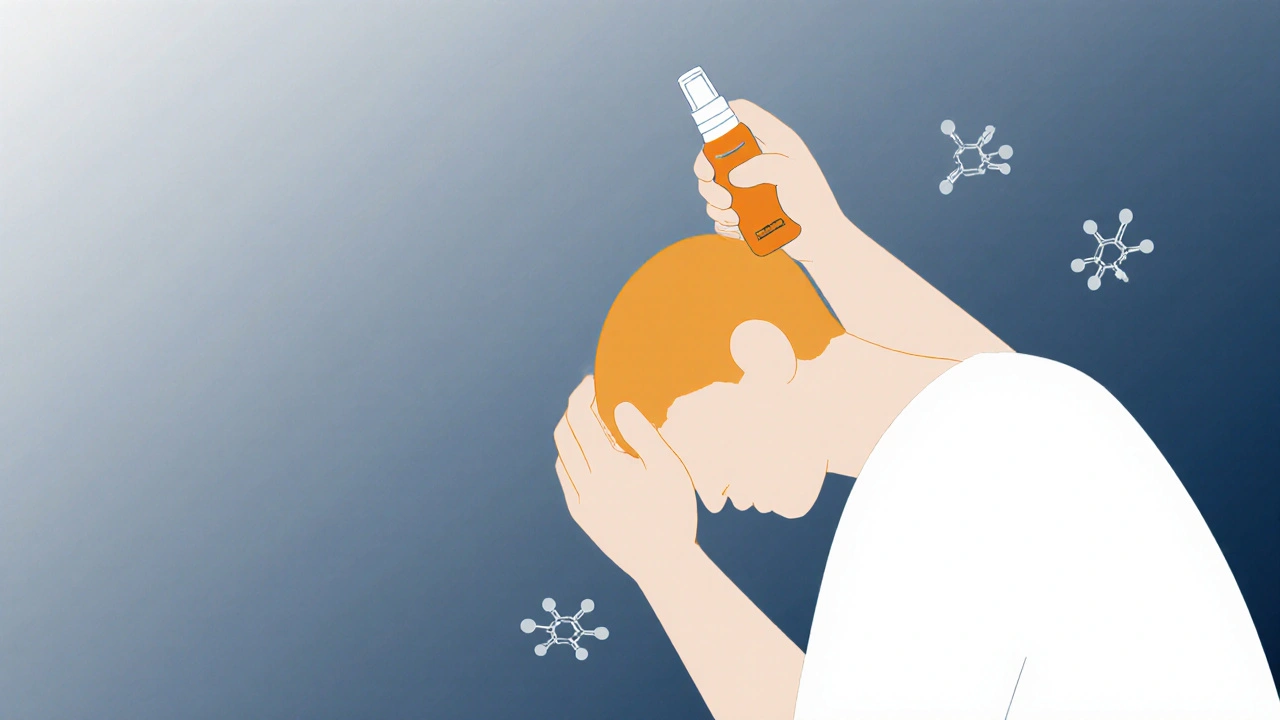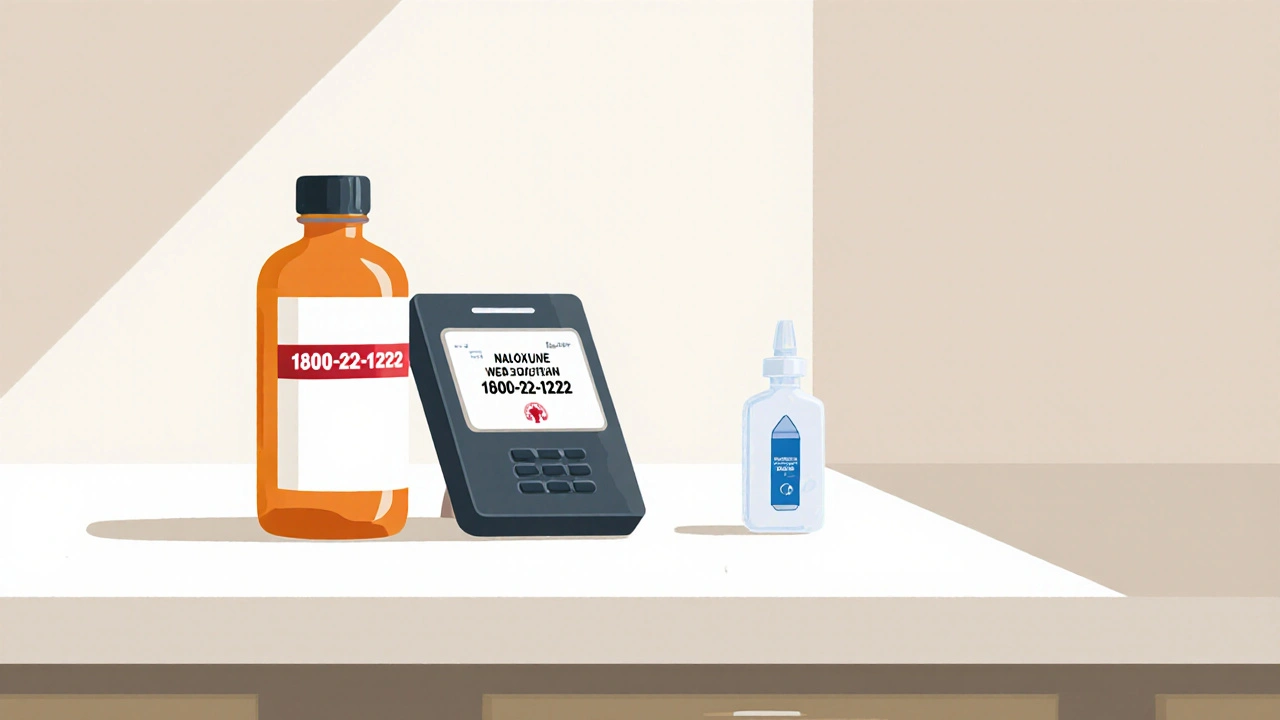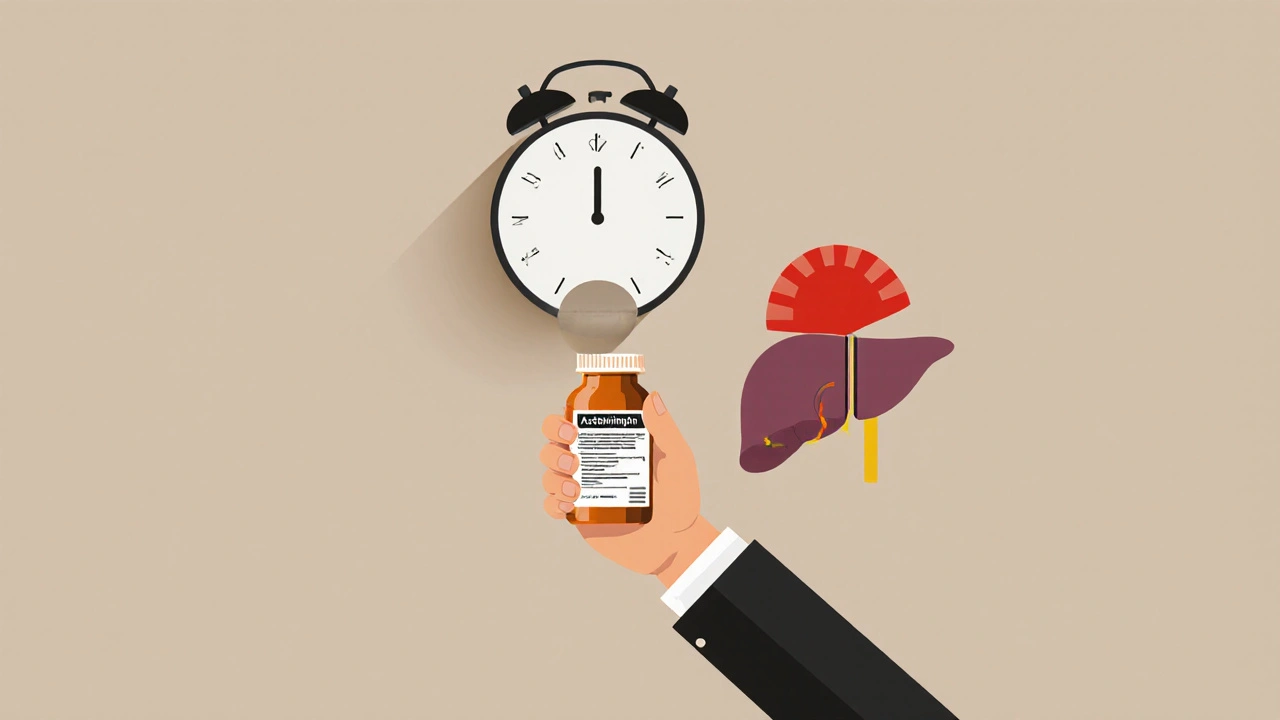When someone overdoses on medication, every minute counts. But knowing what to do isn’t just for doctors or paramedics-it’s something every patient and caregiver should understand. Antidotes aren’t magic pills. They’re precise, time-sensitive tools that can mean the difference between life and death. And if you or someone you care about takes medications regularly, you need to know which ones have antidotes, how they work, and when they matter most.
Acetaminophen Overdose: The Silent Killer
Acetaminophen-found in Tylenol, Excedrin, and hundreds of cold and pain meds-is one of the most common causes of accidental overdose. The scary part? You might feel fine for hours, even a full day, after taking too much. But inside your liver, damage is quietly building. By the time nausea, vomiting, or jaundice show up, it’s often too late.
The antidote is N-acetylcysteine, or NAC. It works by replenishing a natural antioxidant your liver uses to detoxify acetaminophen. But timing is everything. If you take NAC within 8 hours of the overdose, it’s 98% effective at preventing liver failure. After 16 hours, that drops sharply. That’s why emergency rooms use the Rumack-Matthew nomogram-a graph that plots your blood acetaminophen level against time-to decide if you need treatment.
NAC comes in two forms: IV and oral. IV is faster and better tolerated, especially if someone is vomiting. The full IV course takes 21 hours. Oral NAC requires 133 grams total, split into doses over the same period. Both work-but delays cost lives. If you suspect an overdose, don’t wait for symptoms. Call poison control or go to the ER immediately. Even if you feel okay.
Opioid Overdose: Naloxone Is Your Lifeline
Opioids-prescription painkillers like oxycodone or illicit drugs like heroin-slow or stop breathing. That’s what kills. Naloxone reverses this effect by kicking opioids off brain receptors. It’s fast, safe, and doesn’t work on non-opioid drugs. If someone is unresponsive, not breathing, or has pinpoint pupils, naloxone can bring them back.
It’s available as a nasal spray (like Narcan) or an injection. A single dose is 0.4 to 0.8 mg. If there’s no response after 2-3 minutes, give another. That’s right-sometimes you need two or three doses. Why? Because naloxone wears off in 30 to 90 minutes. Many opioids last longer. So even if the person wakes up, they’re not out of danger. They need emergency care.
There’s a myth that naloxone is only for drug users. That’s false. People overdose on prescribed pain meds too. In fact, nearly half of opioid overdoses involve legally prescribed drugs. That’s why 49 U.S. states now allow anyone to get naloxone without a prescription. Pharmacies stock it. Community centers hand it out for free. If you or someone you know takes opioids-even once a week-keep naloxone on hand. It’s not about judgment. It’s about preparedness.
Benzodiazepine Overdose: The Risky Antidote
Benzodiazepines like Xanax, Valium, or Klonopin are prescribed for anxiety, insomnia, or seizures. Overdosing on them alone rarely causes death-because they mainly cause drowsiness. But when mixed with alcohol or opioids, they become deadly. That’s where flumazenil comes in.
Flumazenil reverses benzodiazepine effects by blocking their action in the brain. Sounds perfect, right? Not quite. It’s risky. If someone has been taking benzodiazepines daily for months, flumazenil can trigger sudden withdrawal-seizures, tremors, even cardiac arrest. That’s why doctors avoid it in chronic users. Even in emergencies, they start with a tiny dose-0.2 mg-and go slow.
Most of the time, the best treatment isn’t an antidote at all. It’s supportive care: oxygen, IV fluids, monitoring breathing. If someone’s breathing is weak, they need a ventilator-not flumazenil. The antidote is only considered if the overdose is recent, the person has no history of long-term use, and they’re not mixing with other drugs. Bottom line: Don’t try to give flumazenil at home. It’s not safe. Call 911 and let professionals handle it.

Toxic Alcohols: Ethylene Glycol and Methanol
These aren’t your typical meds-they’re in antifreeze, windshield washer fluid, and some hand sanitizers. Ingesting even a small amount can cause blindness, kidney failure, or death. The body turns them into deadly acids that destroy organs.
The antidote is fomepizole. It blocks the enzyme that turns these alcohols into toxins. The dose is 15 mg/kg IV, then 10 mg/kg every 12 hours. It’s expensive-around $4,000 per treatment-but it’s safer and easier to use than the old alternative: ethanol. Yes, vodka or whiskey. In emergencies, some hospitals use alcohol because fomepizole isn’t available. But ethanol requires constant monitoring, IV drips, and careful dosing. It’s messy. Fomepizole is better.
Time matters here too. Treatment should start within 1-2 hours of ingestion. If you suspect someone drank antifreeze, don’t wait for symptoms. Call poison control immediately. Don’t induce vomiting. Don’t give them coffee or food. Just get them to a hospital. The sooner treatment starts, the better the outcome.
Methemoglobinemia: When Blood Can’t Carry Oxygen
This rare condition happens when certain drugs or chemicals turn hemoglobin into methemoglobin-something that can’t carry oxygen. It can be caused by nitroglycerin, local anesthetics like benzocaine, or even some antibiotics. The skin turns blue-gray, breathing gets hard, and the person feels dizzy or confused.
The antidote is methylene blue. Given as an IV drip over 5 minutes, it helps convert methemoglobin back to normal. The dose is 1-2 mg per kg of body weight. But don’t go over 7 mg/kg total. Too much can cause its own problems. Also, it doesn’t work in people with G6PD deficiency-a genetic condition that affects red blood cells. In those cases, other treatments like exchange transfusion or vitamin C are needed.
If you’re on a medication that can cause this, watch for blue lips or skin that doesn’t improve with oxygen. If you see it, get help fast. This isn’t something you can treat at home.
What You Can Do Right Now
You don’t need to memorize every antidote. But you do need to know three things:
- Know your meds. If you take acetaminophen, check labels. Don’t mix it with other painkillers. Stay under 3,000 mg a day unless your doctor says otherwise.
- Keep naloxone accessible. If you or a loved one takes opioids, get a nasal spray. Keep it in your glovebox, purse, or medicine cabinet. Learn how to use it. Watch a 2-minute video on the FDA website.
- Call poison control immediately. Don’t wait. Don’t Google. Don’t assume it’s "not that bad." The National Poison Control number is 1-800-222-1222. It’s free, confidential, and staffed 24/7 by toxicology experts.
Most overdoses happen at home. Most deaths are preventable. The antidotes exist. The tools are available. What’s missing is awareness. Don’t wait for a crisis to learn this.

What Hospitals Do That You Can’t
Emergency rooms have more than just antidotes. They have monitors, ventilators, labs, and teams trained to handle complex cases. For example, if someone overdosed on both an opioid and a benzodiazepine, giving naloxone alone might not be enough-and flumazenil could trigger seizures. Doctors have to balance risks in real time.
They also track blood levels, adjust doses based on weight and kidney function, and watch for rebound overdose after antidotes wear off. That’s why even if you give naloxone at home, you still need to call 911. The antidote buys time-but not a cure.
And yes, cost matters. NAC IV can run $700. Fomepizole is $4,000. But insurance usually covers it in emergencies. If you’re worried about cost, ask: "Will this be covered under my plan?" Most hospitals have financial aid programs. Your life is worth more than the bill.
Myths That Kill
- Myth: "I’ll just wait and see if they get worse." Truth: With acetaminophen, damage starts before symptoms. Delay = liver transplant or death.
- Myth: "Naloxone is only for addicts." Truth: It saves lives whether the drug was prescribed, bought illegally, or taken accidentally.
- Myth: "Giving someone coffee or a cold shower helps." Truth: Nothing beats calling 911 and using the right antidote.
- Myth: "I’ve used this drug before, so I’m safe." Truth: Tolerance changes. Doses vary. A pill that was fine last week can kill this week.
Overdose isn’t a failure. It’s a medical emergency. And like a heart attack or stroke, the faster you act, the better the chance of survival.
Can I give an antidote to someone at home?
You can safely give naloxone at home if someone is overdosing on opioids. It’s designed for non-medical use. For other antidotes-like NAC, flumazenil, or methylene blue-you should never administer them without medical supervision. They require precise dosing, monitoring, and emergency support. If you suspect an overdose, call 911 or poison control immediately. Don’t try to treat it yourself unless it’s naloxone for an opioid overdose.
Is naloxone available without a prescription?
Yes. As of 2023, naloxone nasal spray is available over-the-counter in pharmacies across the U.S. without a prescription. Many states also allow pharmacies, community centers, and harm reduction programs to distribute it for free. You can buy it like you would an epinephrine auto-injector. Check your local pharmacy or visit the CDC website for free distribution sites near you.
What if I don’t know what drug was taken?
Call poison control at 1-800-222-1222 immediately. They can guide you based on symptoms. In the meantime, if the person is unconscious or not breathing, give naloxone if you have it-even if you’re unsure it’s an opioid. It won’t harm someone who didn’t take opioids. If they’re breathing but drowsy, keep them awake and in the recovery position (on their side). Never leave them alone.
Can children overdose on acetaminophen?
Yes. Children are especially vulnerable because dosing is based on weight. Giving too much, even a little extra, can cause liver damage. Always use the measuring device that comes with the medicine-never a kitchen spoon. If you think a child took more than the recommended dose, call poison control right away. NAC works in children too, and early treatment prevents long-term harm.
Do antidotes have side effects?
Yes. Naloxone can cause sudden opioid withdrawal-nausea, vomiting, sweating, agitation. That’s why small doses are preferred. NAC can cause nausea or allergic reactions, especially with IV use. Flumazenil can trigger seizures in people with chronic benzodiazepine use. Methylene blue can cause blue discoloration of the skin and is dangerous for people with G6PD deficiency. But these side effects are far less dangerous than the overdose itself. Medical professionals weigh the risks and give antidotes only when the benefit outweighs the risk.
Next Steps: Be Ready, Not Scared
Here’s what to do today:
- Check your medicine cabinet. Do you have acetaminophen? Opioids? Benzodiazepines? If yes, know the risks.
- Ask your pharmacist for naloxone. It’s free or low-cost in many places. Keep it where you keep your keys or wallet.
- Save 1-800-222-1222 in your phone. Label it "Poison Control."
- Talk to your family. Let them know where the naloxone is and how to use it.
- Don’t wait for a crisis. Prevention is the best antidote.
Medications save lives. But they can also end them-if used carelessly. Knowing the antidotes isn’t about fear. It’s about control. About being ready. About giving someone a second chance.

Ragini Sharma
so like... i just took tylenol for my headache and now im paranoid lmao
also why does everyone act like naloxone is some superhero drug but no one talks about how expensive fomepizole is?? like my insurance denied it last month and i had to beg the ER to use ethanol instead. they gave me a free shot of vodka. not joking.
Linda Rosie
Proper education on antidotes saves lives. Access to naloxone should be universal. Delayed action is the greatest risk factor.